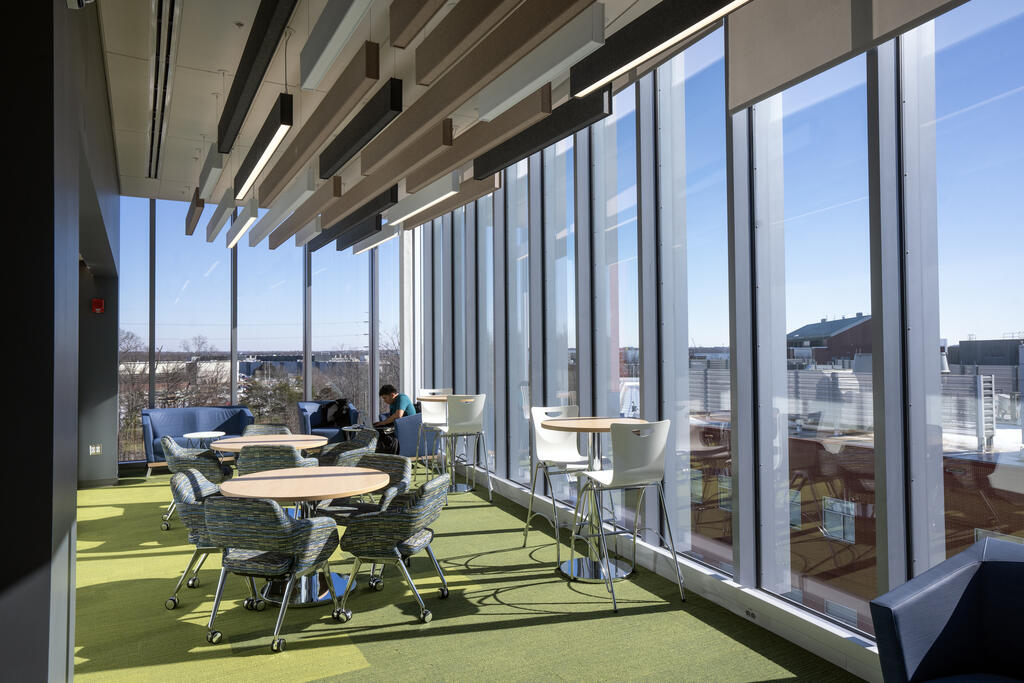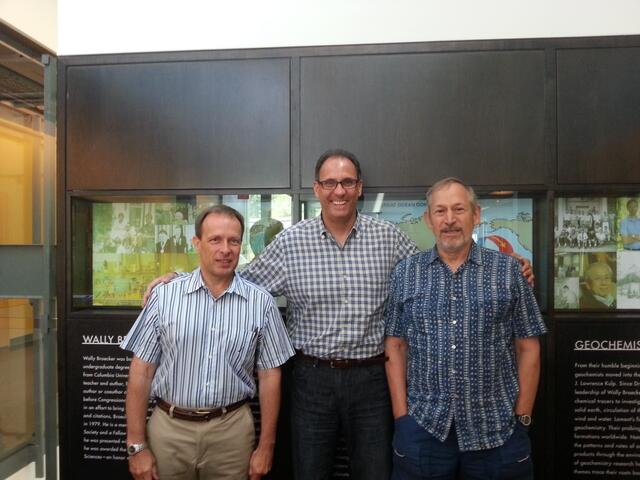Admission CTAs
Dean's Blog: Mentors and love of science spur lifelong climate advocacy
Hispanic Heritage Month (HHM) starts today, and to kick off our 2021 narratives of scientific success within the Hispanic community, I thought I’d highlight the inspirational story of Mario José Molina-Pasquel Henríquez, (Mario Molina), the only Mexican scientist (thus far) to be honored with a Nobel prize. Mario and his mentor, Frank Sherwood Rowland (U.S.), and Paul Crutzen (the Netherlands) received the 1995 Nobel Prize in chemistry for their collaborative research confirming chlorofluorcarbons (CFC) could destroy the ozone layer in the Earth’s stratosphere.
I was an undergraduate student in the 1980s and in those years the research by Mario and his colleagues had become well established and considered pioneering in the field of climate science; this had a profound influence on me as I was thinking about my own career. Mario became sort of a mentor-at-a-distance, since I had never actually met him or talked to him.
But I did get to meet him and talk to him twice! In 1996, I was an assistant professor and was invited to speak at an event geared at attracting and inspiring Hispanics into STEM fields. The main attraction of the event was Mario Molina, who had just received the Nobel Prize. My talk at the event came right before Mario’s keynote address, so I usually joked that I once was the opening act for Mario Molina! Later in 2002, I had the opportunity to host a visit by Mario at my institution. It was great seeing him again, I told him about by “opening act” joke, and he really laughed.
What are some elements of his success story that may resonate within our community?
- Supportive family and faculty mentors cultivate early scientific aptitude.
- Diverse, transdisciplinary collaborations can lead to global scientific breakthroughs that are important in shaping policy.
Beginner scientists
Many scientists credit a family member or friend for helping develop their scientific interests in their early years. Mario’s aunt was also a chemist. She cultivated his love of science,
encouraging him to convert his home bathroom into a chemistry lab to do experiments at age 11. After looking at amoebas swimming under a microscope, Mario was hooked on science.
The College of Science STEM Accelerator and our departments sponsor outreach programs to present similar scientific opportunities to identify and inspire future scientists from kindergarten through high school.
Many of us recognized our fascination for science at a very early age. For me, the work of Mario and other accomplished climate and environmental scientists such as Ignacio Rodriguez-Iturbe, Mark Cane and Steve Zebiak (in the photo with me), as well as Eugenia Kalnay were both inspiring and defining for what has become my career as a scientist.
Supportive family, mentors, and global collaborators
In addition to his supportive aunt, Mario won the prize along with his postdoc mentor, Rowland and European collaborator, Crutzen for their climate change research. It was the first time the Swedish Academy recognized environmental degradation from human-made substances.
In part, inspired by this research, atmospheric chemist Susan Solomon, led a scientific expedition to Antarctica in 1987 which proved that the ozone hole was indeed caused by CFCs. The research by Mario and collaborators helped support the ratification of the Montreal Protocol, the first global treaty to reduce CFC emissions which went into effect in 1989.
Mentorship in Mason's College of Science is prevalent. Our faculty foster scientific inquiry mentoring high school students, within the undergraduate experience, graduate student research and through the postdoc and professorial levels. Our scientists offer research opportunities to solve similar high impact global problems including climate change, space exploration, eradicating health issues from COVID-19 to cancer, saving endangered species, reducing gang violence or the adverse effects of urbanization.
We are known for our mentorship opportunities, in part perhaps because we've modeled our behavior after our own favorite mentors. Who was the mentor you credit with inspiring your scientific journey?
Students at Mason can learn from leaders, award-winning faculty who collaborate with partners around the globe. For his lifelong work, Mario was recognized with many of the top scientific awards, including the Nobel Prize. Within our Mason Science faculty ranks, Mason Science thought leaders who have received similar awards include, philanthropist and World Meteorological Organization Prize winner (Jagadish Shukla) and a National Academy of Science member, biodiversity pioneer (Thomas Lovejoy). Our faculty have helped author current environmental and energy policy including the Endangered Species Act and like Mario give back to our college to establish pathways for others.
The College of Science is committed to provide opportunities and a supportive framework for our diverse body of scientists to change the world.
“It’s clear to me that one of the important needs for global environment issues is the participation of scientists from all over the world,” Mario once said. “We have some very big challenges ahead if we are to preserve the environment, and it's obvious that there are too few scientists from developing countries involved in the effort.”

